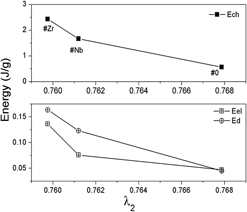Article contents
On the valence electron theory to estimate the transformation temperatures of Cu–Al-based shape memory alloys
Published online by Cambridge University Press: 11 July 2017
Abstract

A systematic analysis of the correlation between the valence electrons and the transformation temperatures of Ti–Ni-based shape memory alloys has been carried out by Zarinjad and Liu. They have shown that the valence electron theory can be successfully applied to estimate these temperatures, although the mechanisms of the temperature shift during alloying remains not completely understood. Other important shape memory alloy systems with technological importance are the Cu–Al based, which deserve a thorough analysis concerning the composition influence on the transformation temperatures and the valence electron theory. In this paper, the valence electron concentration, valence electron density (VED), enthalpy of reaction, and crystallographic compatibility were analyzed to understand the mechanisms, which control the transformation temperatures of Cu–Al-based alloys. It was observed that the larger the VED, the more energy is used in the transformation. The same tendency is present when the crystallographic compatibility is smaller. These results show that the valence electron theory based on the VED plays an important role in the prediction of the temperature transformation and the energies involved in the reaction.
- Type
- Articles
- Information
- Copyright
- Copyright © Materials Research Society 2017
Footnotes
Contributing Editor: Susan B. Sinnott
References
REFERENCES
- 11
- Cited by



